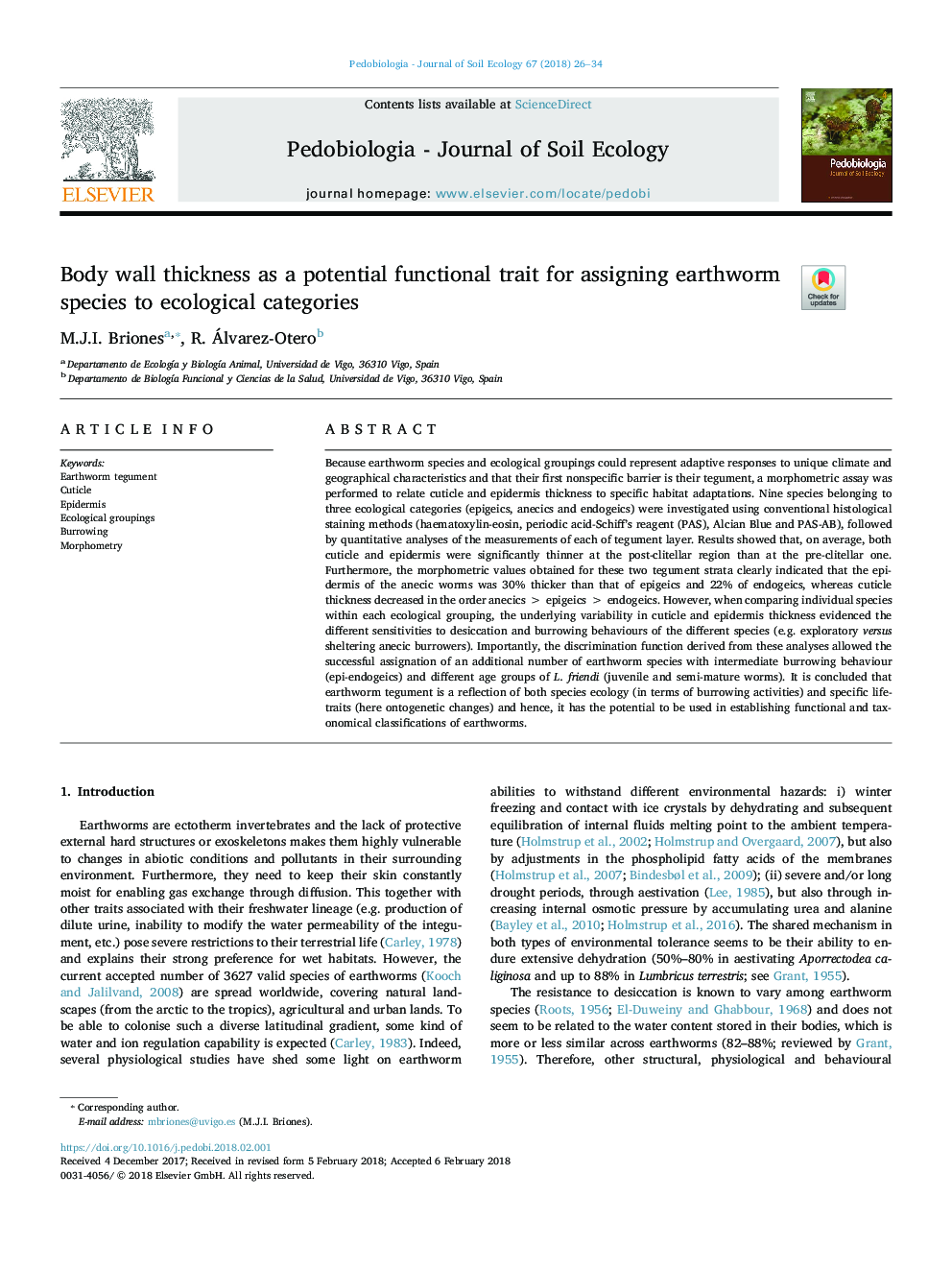| کد مقاله | کد نشریه | سال انتشار | مقاله انگلیسی | نسخه تمام متن |
|---|---|---|---|---|
| 8392416 | 1544015 | 2018 | 9 صفحه PDF | دانلود رایگان |
عنوان انگلیسی مقاله ISI
Body wall thickness as a potential functional trait for assigning earthworm species to ecological categories
ترجمه فارسی عنوان
ضخامت دیواره بدن به عنوان یک ویژگی عملکرد بالقوه برای اختصاص گونه های کرم خاکی به دسته های اکولوژیکی
دانلود مقاله + سفارش ترجمه
دانلود مقاله ISI انگلیسی
رایگان برای ایرانیان
موضوعات مرتبط
علوم زیستی و بیوفناوری
علوم کشاورزی و بیولوژیک
علوم دامی و جانورشناسی
چکیده انگلیسی
Because earthworm species and ecological groupings could represent adaptive responses to unique climate and geographical characteristics and that their first nonspecific barrier is their tegument, a morphometric assay was performed to relate cuticle and epidermis thickness to specific habitat adaptations. Nine species belonging to three ecological categories (epigeics, anecics and endogeics) were investigated using conventional histological staining methods (haematoxylin-eosin, periodic acid-Schiff's reagent (PAS), Alcian Blue and PAS-AB), followed by quantitative analyses of the measurements of each of tegument layer. Results showed that, on average, both cuticle and epidermis were significantly thinner at the post-clitellar region than at the pre-clitellar one. Furthermore, the morphometric values obtained for these two tegument strata clearly indicated that the epidermis of the anecic worms was 30% thicker than that of epigeics and 22% of endogeics, whereas cuticle thickness decreased in the order anecicsâ¯>â¯epigeicsâ¯>â¯endogeics. However, when comparing individual species within each ecological grouping, the underlying variability in cuticle and epidermis thickness evidenced the different sensitivities to desiccation and burrowing behaviours of the different species (e.g. exploratory versus sheltering anecic burrowers). Importantly, the discrimination function derived from these analyses allowed the successful assignation of an additional number of earthworm species with intermediate burrowing behaviour (epi-endogeics) and different age groups of L. friendi (juvenile and semi-mature worms). It is concluded that earthworm tegument is a reflection of both species ecology (in terms of burrowing activities) and specific life-traits (here ontogenetic changes) and hence, it has the potential to be used in establishing functional and taxonomical classifications of earthworms.
ناشر
Database: Elsevier - ScienceDirect (ساینس دایرکت)
Journal: Pedobiologia - Volume 67, March 2018, Pages 26-34
Journal: Pedobiologia - Volume 67, March 2018, Pages 26-34
نویسندگان
M.J.I. Briones, R. Álvarez-Otero,
